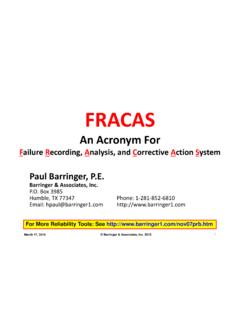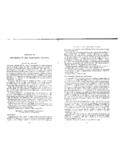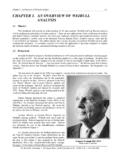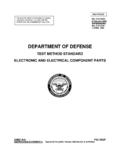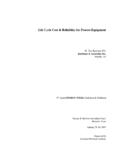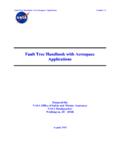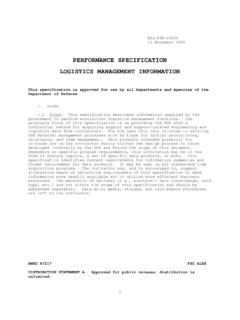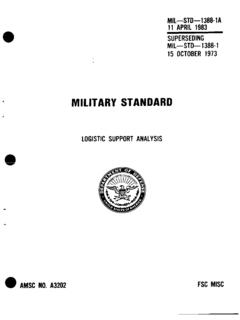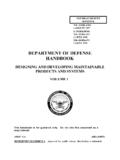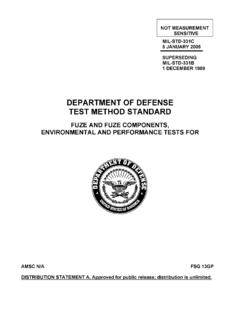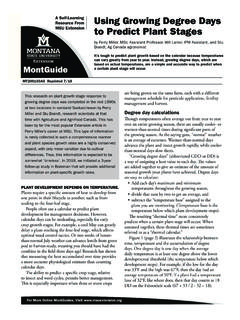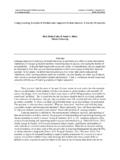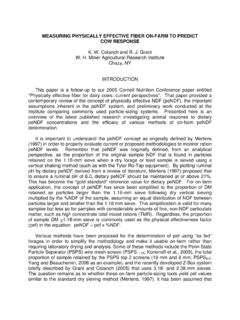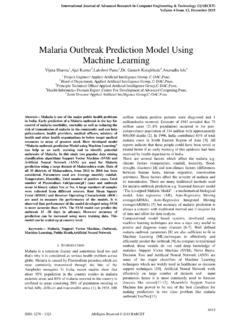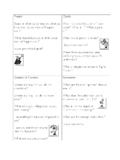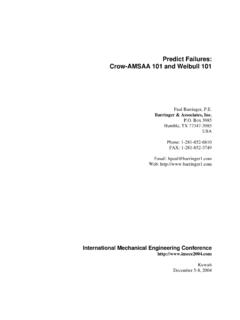Transcription of Predict Future Failures From Your Maintenance Records
1 2003 Predict Future Failures From Your Maintenance Records H. Paul Barringer, Barringer & Associates, Inc. Box 3985 Humble, Texas 77347-3985, USA Phone: 1-281-852-6810 FAX: 281-852-3749 International Maintenance Conference, December 7-10, 2003 Sheraton Sand Key Resort, Clearwater Beach, Florida Sponsored by Providing resources and solutions for Maintenance & reliability professionals 2 of 13 Predict Future Failures From Your Maintenance Records IMC-2003 Predict Future Failures From Your Maintenance Records H.
2 Paul Barringer, Barringer & Associates, Inc., SUMMARY: Crow/AMSAA reliability growth plots use failure information from Maintenance systems to provide a visual tool, with straight-line graphs, for predicting the next failure in systems where humans can influence the results. C/A plots work well with single failure or mixed failure modes. The simple log-log plots have easily calculated statistics to show if Failures are increasing, decreasing, or exhibiting no-change in failure rates.
3 The straight-line plots are helpful for forecasting Future Failures the fearless forecast of Future events catches the interest of people who can change the system to prevent the forecasted events. When implementing system improvements calculate and track the savings in Failures between the old and new methods to convert Maintenance situations into time and money for easy selection of alternatives. Keywords: reliability growth plots, Crow/AMSAA plots, failure forecasts, mixed failure modes 1.
4 WHAT ARE CROW/AMSAA RELIABILITY GROWTH PLOTS? Cumulative Failures plotted against cumulative time on log-log graphs form Crow/AMSAA reliability growth plots. The plots can handle data from single failure modes or multiple failure modes. Slope of the trend line is an important statistic telling if Failures are increasing, decreasing, or the failure rate is unchanged. The method is simple and visual. The challenge of every reliability engineer is to make reliability improvements to avoid Failures .
5 Improvements, with longer times between Failures , will put a cusp on the trend lines. The cusp will demonstrate a real change has occurred by substantially stretching the time until the next failure. The longer intervals to the next failure will cause localized trend lines to appear with flatter slopes. When the former trend line is extrapolated to longer times, improvements must demonstrate measurable, vertical gaps, which measure the cumulative Failures avoided by the improvements.
6 Thus improvements are visual, and quantifiable likewise deteriorating conditions produce steep slopes, and situations of no change are identifiable. The view from your office may be spectacular, but can you see the Future Failures and make your information visual to the organization? You need a vision for forecasts of Future expected Failures along with their costs and alternatives for reducing the costs. The tools for gaining this vision are your Maintenance failure data and Crow/AMSAA plots.
7 The view for reliability growth plots comes from the simplicity of straight lines on log-log plots. Today, log-log plots are emerging from unusual studies. The straight-line plots make explanations easy and understandable. Web crawler robot studies on the Internet find a power law distribution relating incoming links on web pages and outgoing links to web pages. Studies of computer networks spell out straight-line relationships on log-log plots. Science fails to see straight-line relationships on log-log plots because they have not looked for them (Barab si 2002).
8 Barab si s unique exponents for his network equations have negative values, over a limited range of values, whereas reliability growth curves have positive exponents, again over a narrow range. The log-log plots describe natural laws at work. 3 of 13 Predict Future Failures From Your Maintenance Records IMC-2003 2. WHY DO CROW/AMSAA GROWTH PLOTS MAKE STRAIGHT LINES? Why do Crow/AMSAA plots of cumulative Failures versus cumulative time produce straight lines on log-log plots?
9 The forerunner of the C/A concept has parallel roots in manufacturing with exhaustive demonstration as log-log phenomena. It is a natural occurrence of learning and improving. Consider the following parallel which began before Crow/AMSAA plots. T. P. Wright (1936) pioneered an idea that improvements in man-hours to manufacture an airplane could be described mathematically--a very helpful concept for management production planning. Wright s findings showed that, as the quantity of airplanes produced in sequence, the direct labor input per airplane decreased in a mathematical pattern that forms a straight line when plotted on log-log paper.
10 If the rate of improvement is 20% (the learning percentage is 80%) and thus when large processes and complicated operations production quantity is doubled, the time required for completing the effort is 20% less. Thus, a unit of production will decrease by a constant percentage each time the production quantity doubles. Figure 1 illustrates the concept. (Teplitz 1991) Wright s method in the 1940 s was a helpful concept for the USA War Production Board in estimating the number of airplanes produced for a given complement of men and machines.
